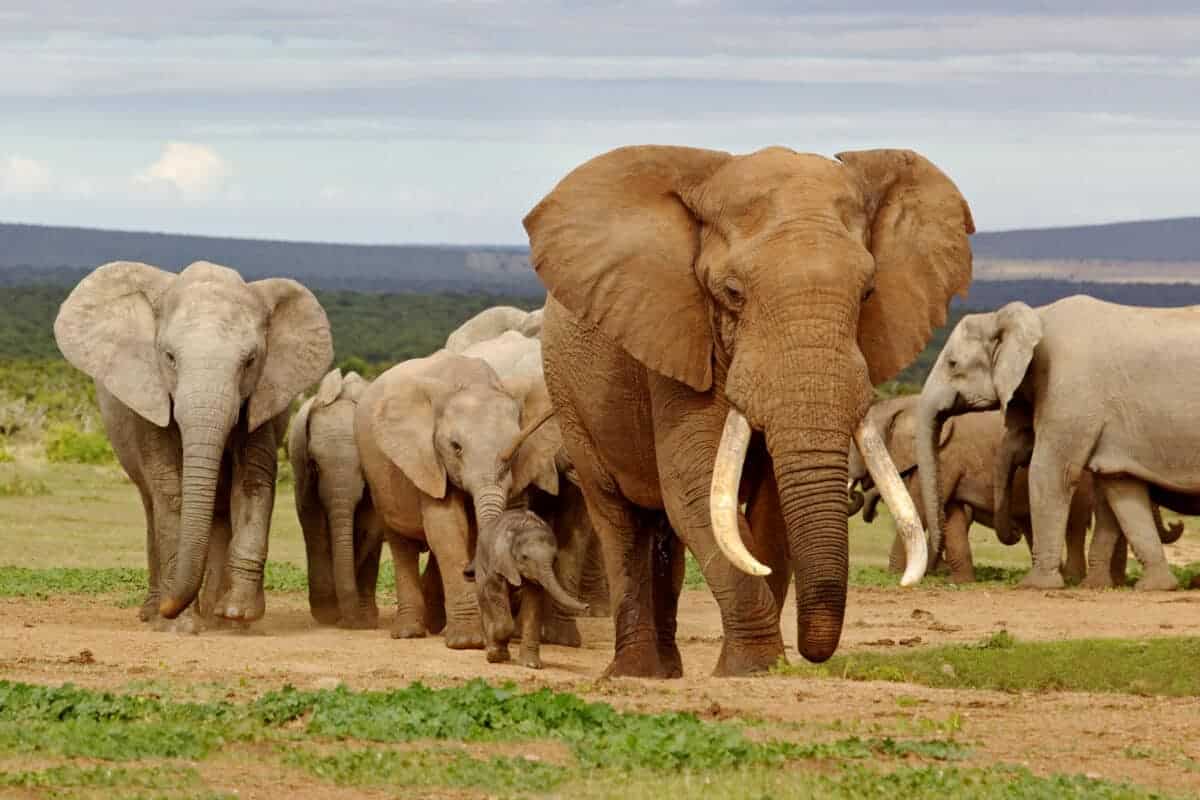In the vast expanse of Earth’s rich biodiversity, certain creatures emerge as true titans, capturing our collective imagination with their monumental size. From the depths of the ocean to the sweeping landscapes and soaring skies, these giants command attention and admiration. Join us on a journey to explore these awe-inspiring creatures that inhabit our planet’s land, sea, and sky.

In the mysterious depths of the ocean, the Blue Whale (Balaenoptera musculus) reigns supreme as the largest creature on Earth. Stretching to lengths exceeding 100 feet (30 meters), these majestic beings traverse the globe’s oceans, from the Arctic’s icy waters to the equator’s warmth. Despite their colossal size, Blue Whales sustain themselves with a delicate diet, feasting on tiny krill filtered through their intricate baleen plates.
On the vast plains and dense forests of Africa, the African Elephant (Loxodonta africana) claims its title as the largest land mammal. Standing over 10 feet (3 meters) tall and weighing an astonishing 14,000 pounds (6,350 kilograms), these gentle giants roam freely, their presence a testament to the delicate balance between Earth’s colossal inhabitants and their habitats. As herbivores, African Elephants graze on a diverse diet, consuming grasses, leaves, bark, and a variety of fruits.

In the expansive landscapes of Africa, the adaptable Ostrich (Struthio camelus) stands tall as Earth’s largest bird. Towering at 9 feet (2.7 meters) and weighing up to 340 pounds (154 kilograms), these flightless birds showcase resilience in diverse environments, from open savannas to arid deserts. Omnivores by nature, Ostriches indulge in a versatile menu that includes plants, seeds, insects, and small animals.

The Giraffe (Giraffa camelopardalis), with its iconic long neck, gracefully navigates the open woodlands and savannas of Africa. Reaching heights of 18 feet (5.5 meters) or more, Giraffes use their towering stature to their advantage, spotting predators from afar. As herbivores, Giraffes feast on leaves, flowers, and fruits from the lofty branches of tall trees.
Soaring through the boundless skies, the Wandering Albatross (Diomedea exulans) claims its place as the bird with the largest wingspan, stretching up to 11 feet (3.4 meters). These majestic seabirds traverse the vast Southern Ocean, covering immense distances and spending a significant portion of their lives gracefully gliding over the open sea. Oceanic foragers, Wandering Albatrosses feed on squid and fish, showcasing their mastery of the open ocean.
As we marvel at these colossal creatures, we are reminded of the intricate tapestry of life on Earth. Through understanding and appreciation, we can find inspiration to conserve and protect the delicate balance of our natural world. The giants of Earth embody resilience, grandeur, and the interconnectedness that defines our shared home.
Join our Forum for free today!

- Second American Killed by Elephant in Zambia This Year - July 22, 2024
- Elderly Man Kills Grizzly Bear in Montana - July 22, 2024
- Missing Cat Found Weeks Later, 40 Miles Away - July 21, 2024

